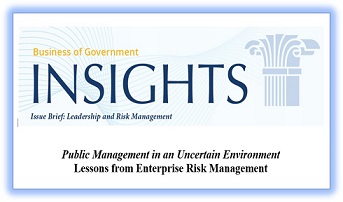
INSIGHTS: Issue Brief on Public Management in an Uncertain Environment

Harvard Business School Professor Emeritus John Kotter has proposed that business organizations develop networks internally to help their traditional hierarchies function in today’s fast-changing environment. Government too finds itself increasingly beset by difficult problems that challenge the ability of departments and agencies to respond promptly and appropriately. Kotter proposes that companies adopt a “dual operating system” of the traditional organizational hierarchy joined with one or more internal networks that can liberate big companies from the constraints on creativity and agility that a corporate hierarchy imposes.
Federal government risk management expert, Tom Stanton, sees value in leveraging Kotter’s “dual operating system” finding key parallels with the application and use of enterprise risk management (ERM). In fact, Stanton points out in his new Insights Issue Brief for the IBM Center that a process in government that reflects Kotter’s dual operating system best is ERM. Stanton acknowledges that while Kotter focuses primarily on private companies, his work also applies to government organizations. His idea of a dual operating system explains why ERM can be so effective in government agencies. ERM in turn shows how to apply Kotter’s dual operating system to increase the performance and agility of government agencies. In this recent Issue Brief, Stanton provides an introduction to John Kotter’s dual operating system model; an overview of Enterprise Risk Management as it operates in government organizations; lessons from ERM about how to apply the dual operating system model to government organizations; and opportunities for expanding the dual operating system model from ERM to operations of government organizations more broadly.
According to Stanton, while retaining silos and their functions, the dual operating system helps to overcome their shortcomings as barriers to information flow and cooperation. This helps leaders and managers to know what’s going on. ERM is a good example of this approach. By helping agencies to make better decisions involving risk-reward tradeoffs, ERM also helps leaders and managers to focus their efforts and pick important problems and fix them. ERM is a dual operating system in action at many U.S. federal agencies and in an increasing number of state and local governments as well. The most significant contribution of applying Kotter’s model to government may be the extent to which government officials themselves adopt a personal dual operating system in their day-to-day work.



